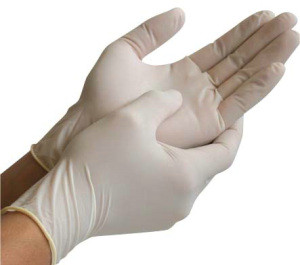
When you hear about a latex allergy, you might think it means a person is simply allergic to rubber. Common enough, right? However, if you have a latex allergy, it can also mean you are allergic to certain types of foods handled by rubber gloves, along with instruments used in a medical facility. A reaction can occur even if you are not coming in direct contact with the rubber itself!
Latex is a natural rubber that comes from a tree in Brazil. A latex allergy concerns the proteins found in the rubber that comes from the tree. The protein found in the latex may cross-react with some foods, meaning if you have a latex allergy, there is a good chance you may also be sensitive to avocados, chestnuts, bananas, wheat, mangos, potatoes and tomatoes. Like most allergies, side effects include itchy eyes, a runny nose hives, and in severe cases, anaphylaxis shock.
The most common items that contain latex are balloons, rubber gloves, rubber bands, and erasers, some of which are everyday items. It is important to familiarize yourself with common latex products if you are latex allergy-prone and carefully read the labels before you bring items like this into your home.
Latex allergies can be inherited, so if you have any family members that are allergic, it is important to get your children tested with a skin or a blood test from your doctor. These allergies can also appear later in life due to long term exposure with the product. If you have any concerns about latex or foods that may interact with a latex allergy, check with your doctor or do a bit of your own research online or in the library. You would be surprised to find how many ways latex can indirectly cause a reaction!


